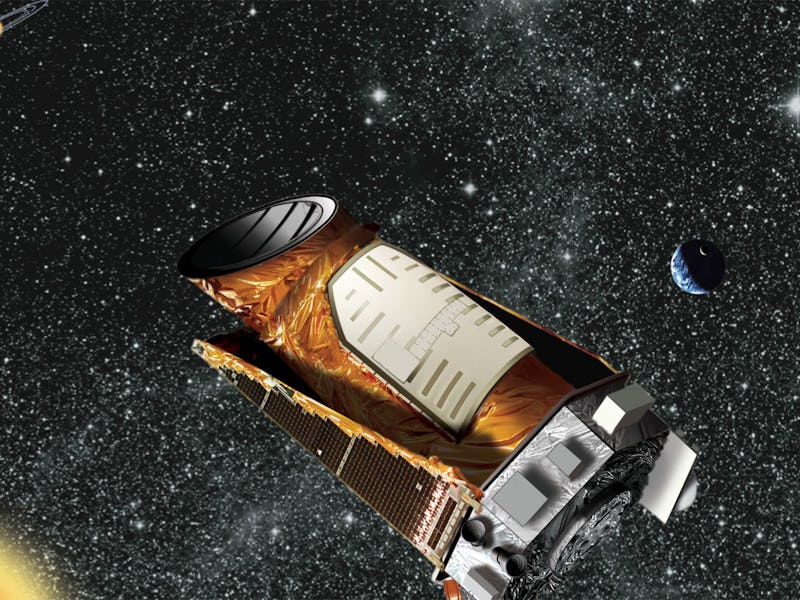Launched in 2009, the Kepler Space Telescope’s mission was to search the galaxy for exoplanets. It found thousands of new planets, some Earth-like, during its time in space, but as fuel is low for the spacecraft, it will soon be time to put the telescope to rest.
NASA announced Friday that Kepler will be put in a hibernation-like state as fuel has become very low. From this point, the priority for the space agency is to download the data from its 18th observing campaign. Transmitting data can occur during Deep Space Network time, which is in early August. In that time, the Kepler will wake up and maneuver itself with the remaining fuel so that its antenna will point toward Earth. The space telescope will then begin its 19th campaign with its remaining fuel.
The Kepler Space Telescope has been in a heliocentric orbit around Earth since 2009.
Named after Johannes Kepler, a 16th-century German astronomer, the Kepler Space Telescope discovered 2,650 planets since it launched. The telescope finds new planets by the “transit method.” It observes stars in certain regions of space and for any dips in brightness. Those dips can be planets that are moving across the stars. From the data, the size and distance of the planet can be calculated along with if the planet’s character temperatures that can determine if it’s habitable.
During its mission, the Kepler suffered multiple issues. Most notable, in 2013, a malfunctioned reaction wheel on the spacecraft prevented it from being stable required NASA to readjust the mission for the Kepler. The result was K2, or “Second Light,” which used the pressure from the sun to keep it stabilized and continue observing space for new planets. Kepler’s new mission went into effect in May 2014, and it continued to find new planets outside of the solar system, thousands of light years away.
On August 2, NASA will wake-up Kepler and maneuver the spacecraft to begin transmission of the latest data. It will then proceed to its 19th observing campaign on August 6 with the fuel it has left.
Kepler’s “replacement” is the Transiting Exoplanet Survey Satellite (TESS), which has a lofty goal of finding 20,000 new exoplanets.
